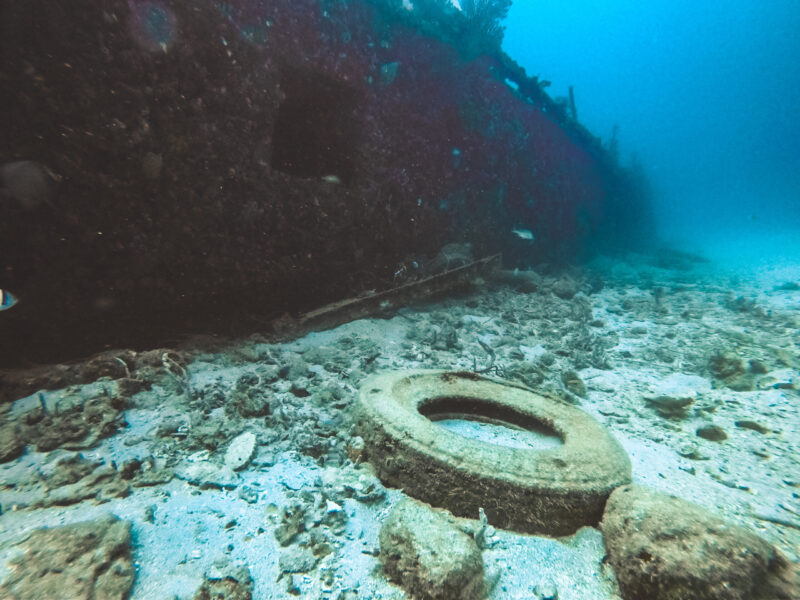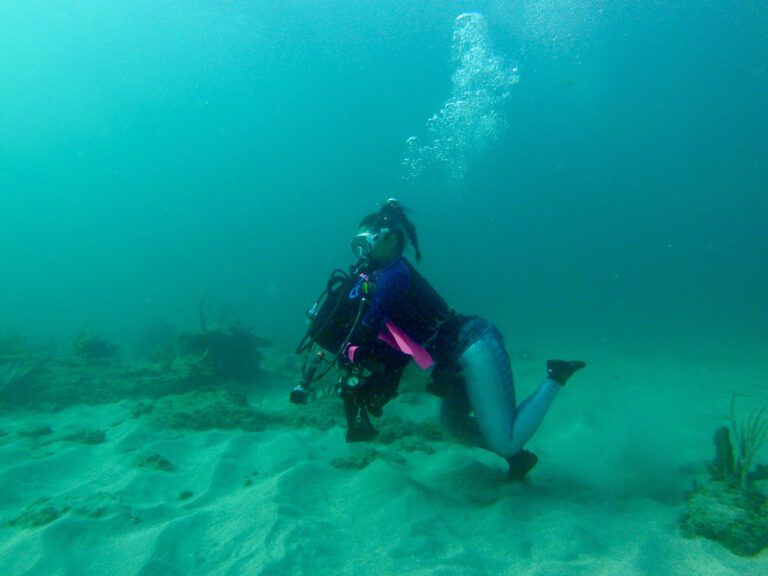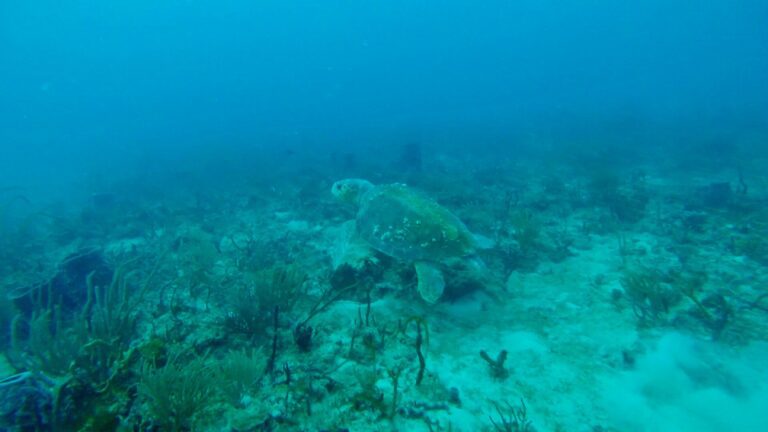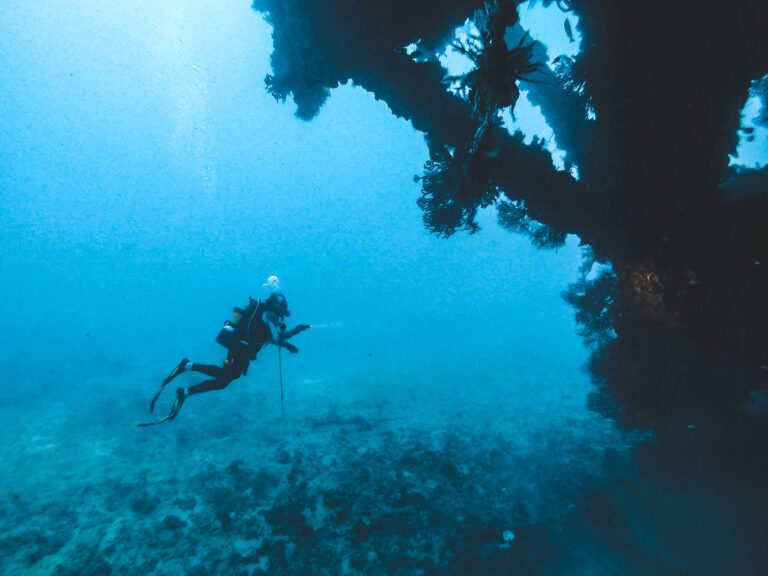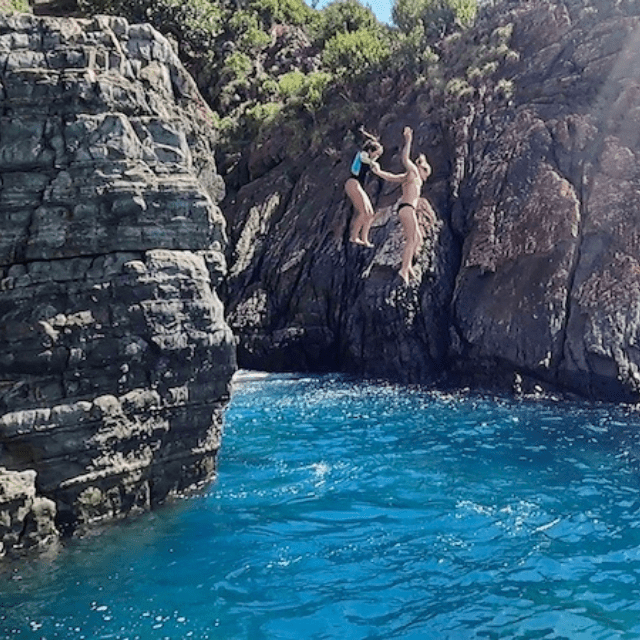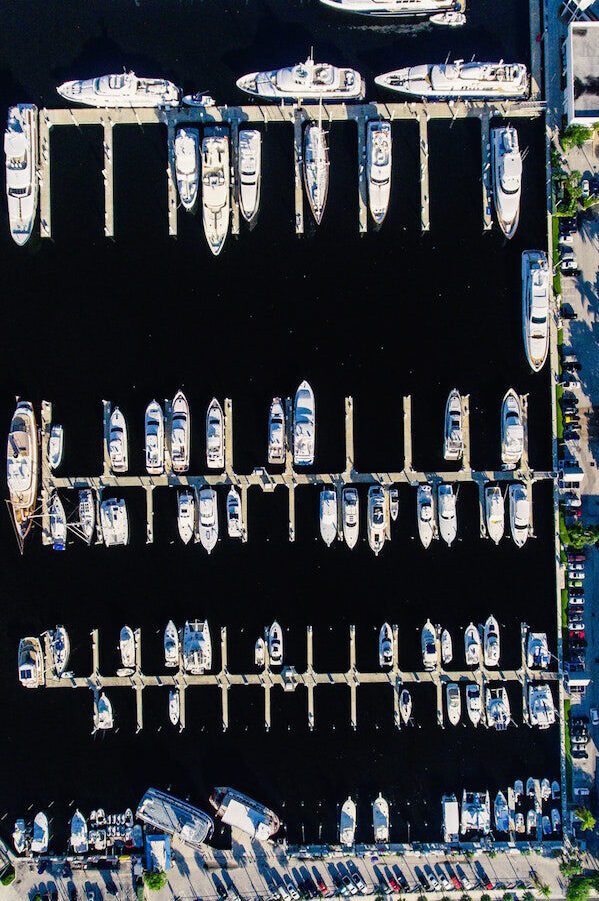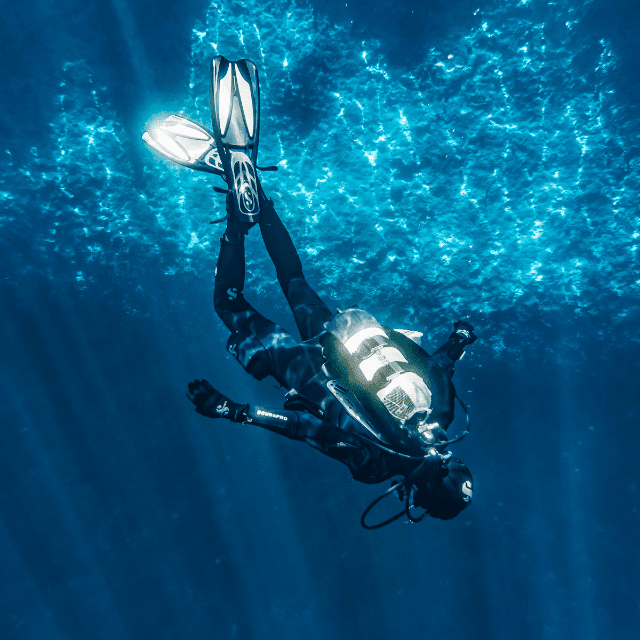Why Do You See Tires When Diving in Fort Lauderdale?
Unless you were closing your eyes, you likely noticed the exuberant amount of tires when diving in Fort Lauderdale. Here’s why they’re there.
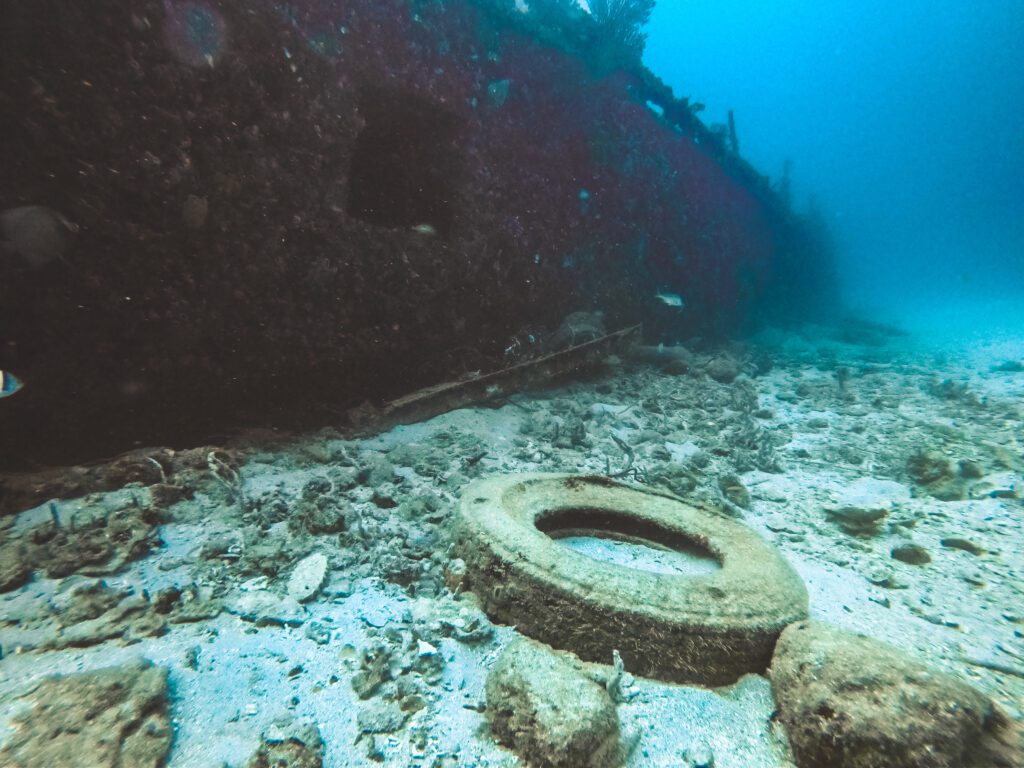
Why are so many tires in the waters of Fort Lauderdale?
You’ve seen it. I’ve seen it. Tires everywhere! Peppered throughout the coral reef, clinging against ship wrecks, or randomly sitting in a plot of sand. What’s up with that?
It was all apart of a program back in the 1970s designed to stimulate coral growth in the area.
An estimated 2 million tires were dumped into the waters off of Fort Lauderdale Beach bundled together by a thin metal wiring and clip. Seemingly, the question everyone forgot to ask was, “what happens to metal over time in the water?”
Yea. They forgot that minor detail.
Unsurprisingly, the clips eventually rusted to the point of breaking and the tires spilled everywhere. Now, if you’ve ever picked up a tire, they’re certainly not light. But what do you think is stronger? The ocean or a measly tire?
You guessed it! The ocean with its forceful currents, changing tides, and powerful hurricanes!
Unfortunately, spreading from their original drop point, Osborne Reef, the tires traveled to nearby coral reefs, shipwrecks, and even washing up on local beaches, terrorizing marine life along the way.
It’s safe to say, the program was a massive failure. But why was it done in the first place?
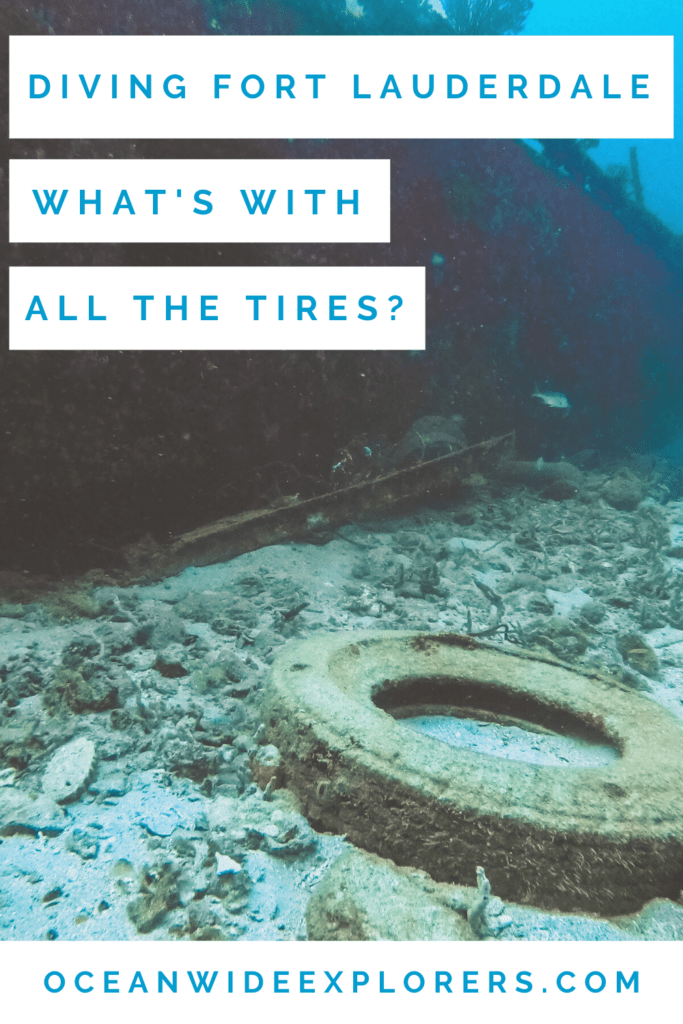

Good Intentions, Bad Ideas
Clearly, Osborne Reef had good intentions behind it. On paper, Osborne Reef was to be a thriving marine habitat. In fact, we do actually see these programs work today!
It’s called an “artifical reef” and, when implemented correctly, can be a huge component of marine conservation efforts. An intentionally sunken ship is a great example of a successful artificial reef.
The sunken structures, whether it’s a shipwreck, boulders, or other solid surfaces serve as an attachment site for coral. The coral grows, fish and other sea creatures inhabit the area and voila! You have a thriving coral reef for marine life, fishermen, and scuba divers alike!
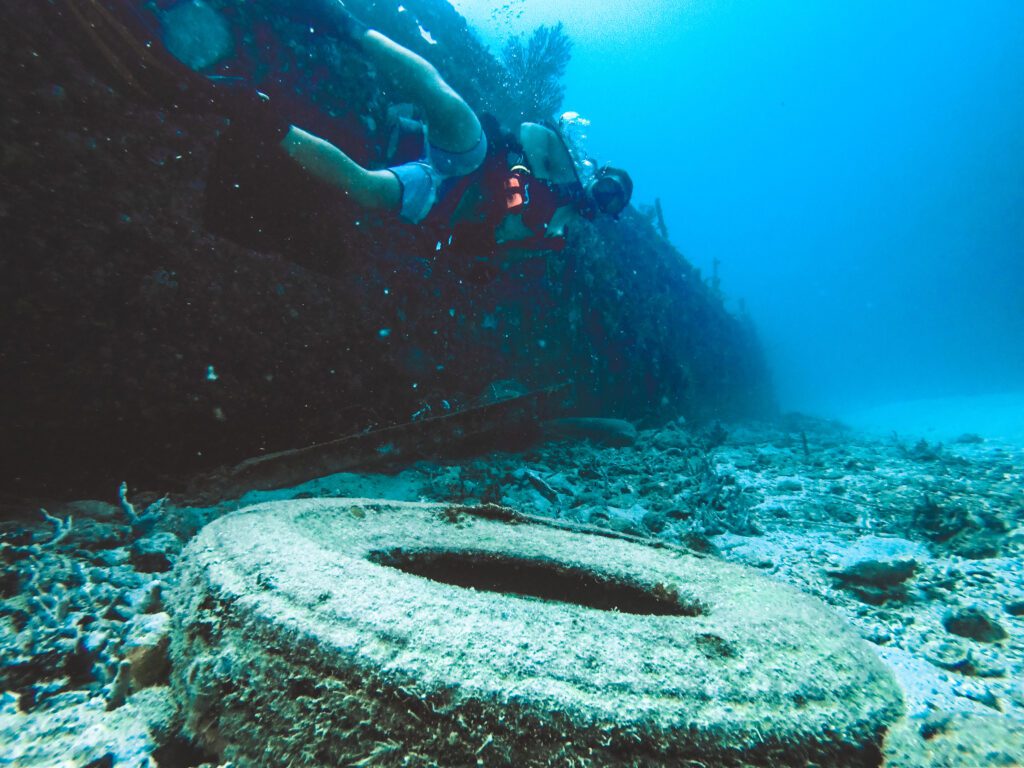
So why didn’t the tires work?
Well for one, as mentioned earlier, the tires have scattered and continually move to this day. Coral requires a strong and stable surface to grow and a moving tire is just not a conducive environment. By contrast, a shipwreck is HUGE, providing a stable and nearly immovable surface for coral to attach and grow.
Additionally, some scientists suggest the material of tires (rubber) releases toxins harmful to coral. But the research doesn’t seem to be definitive.
To no surprise, the program was deemed an environmental disaster and Fort Lauderdale (and the state of Florida) is paying for it today.
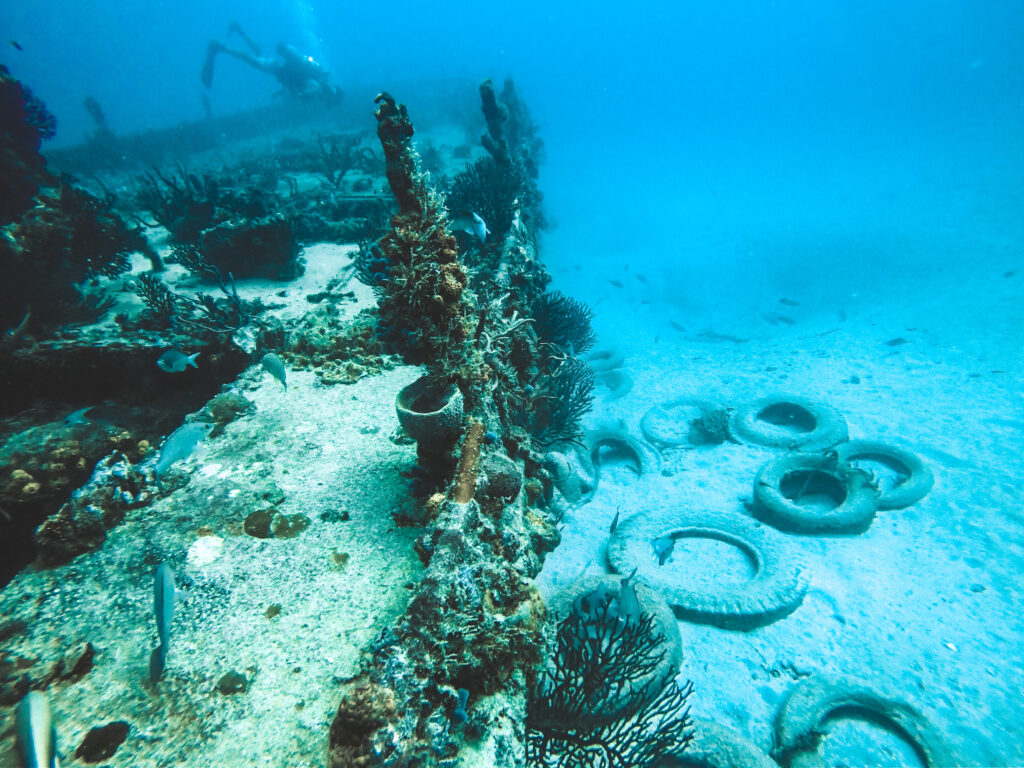
Who’s removing the tires from Fort Lauderdale waters?
In 2007, the military removed approximately 70,000 tires. In 2015, the state of Florida contracted The Industrial Divers Corporation of Fort Lauderdale to finish the job.
Although they’re working diligently, an estimated two thirds of the tires still remain below the surface. Certainly, they have their work cut out for them!
What do they do with the tires that are removed?
Tires pulled out of the water are transported to an energy plant near Tampa on Florida’s west coast, according to the Guardian. Once delivered, the plant somehow burns the tires converting them into renewable energy. The process is beyond my understanding but it seems like it could be a viable solution to such a dire problem.
The importance of quality decision making in environmental policy
It’s easy to look back and wag your finger, hindsight is always 20/20, after all. But it seems unimaginable to think something like this could happen today, doesn’t it?
Or maybe it could?
Sure, environmental policy always looks good on its face. Honestly, who doesn’t care about the environment? What we need to consider though, is the second and third order consequences of those policies. If we implement programs simply because they look good by name and face, what sort of tire disasters will we be leaving for our children to clean up?
Today, quality environmental policy is more important than ever; our corals are dying, marine life is dwindling, and our oceans are depending on our protection. Our environment has enough working against it, let’s not contribute to the problem.
So next time you’re diving in Fort Lauderdale, take it all in, tires and all. May it serve as a reminder of the importance of quality decision making. Our oceans are depending on it.
Enjoy this Post? Pin it!


Read More About Diving in Fort Lauderdale
We hope you enjoyed our post on seeing the tires when diving in Fort Lauderdale. Hopefully you’ll find it useful on your next adventure! Here are a few more ocean-loving articles we think you should read next:
- 11 Reasons to Dive in Fort Lauderdale
- Diving Hammerhead Reef in Fort Lauderdale
- Best Dive Shops in Fort Lauderdale
- 11 Coolest Ocean Animals in Florida
- 10 Best Dive Sites in Fort Lauderdale
Have you seen the tires while diving in Fort Lauderdale? What did you think when you first saw? Have you any solutions to how we could help correct the situation? Leave a comment below!

